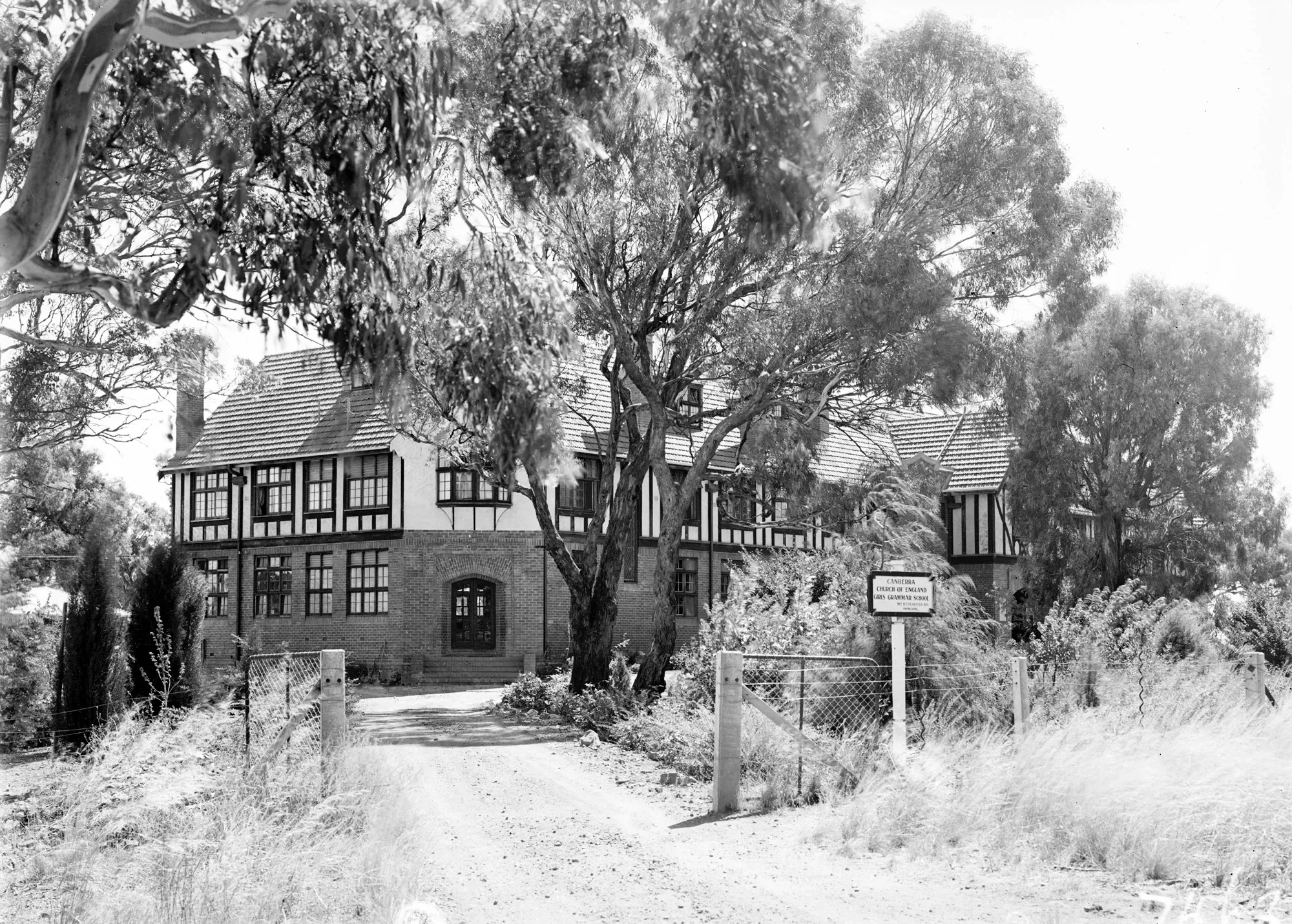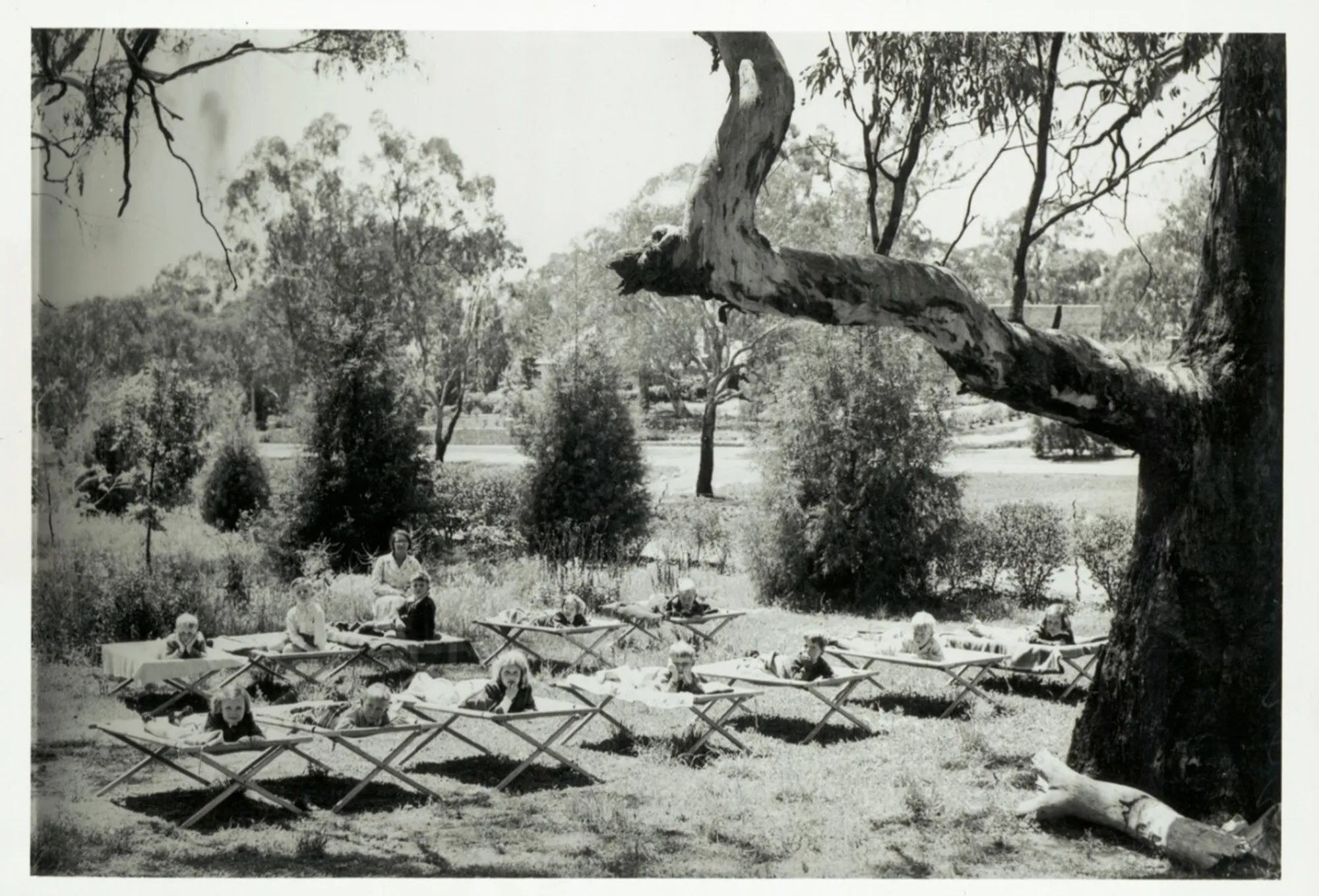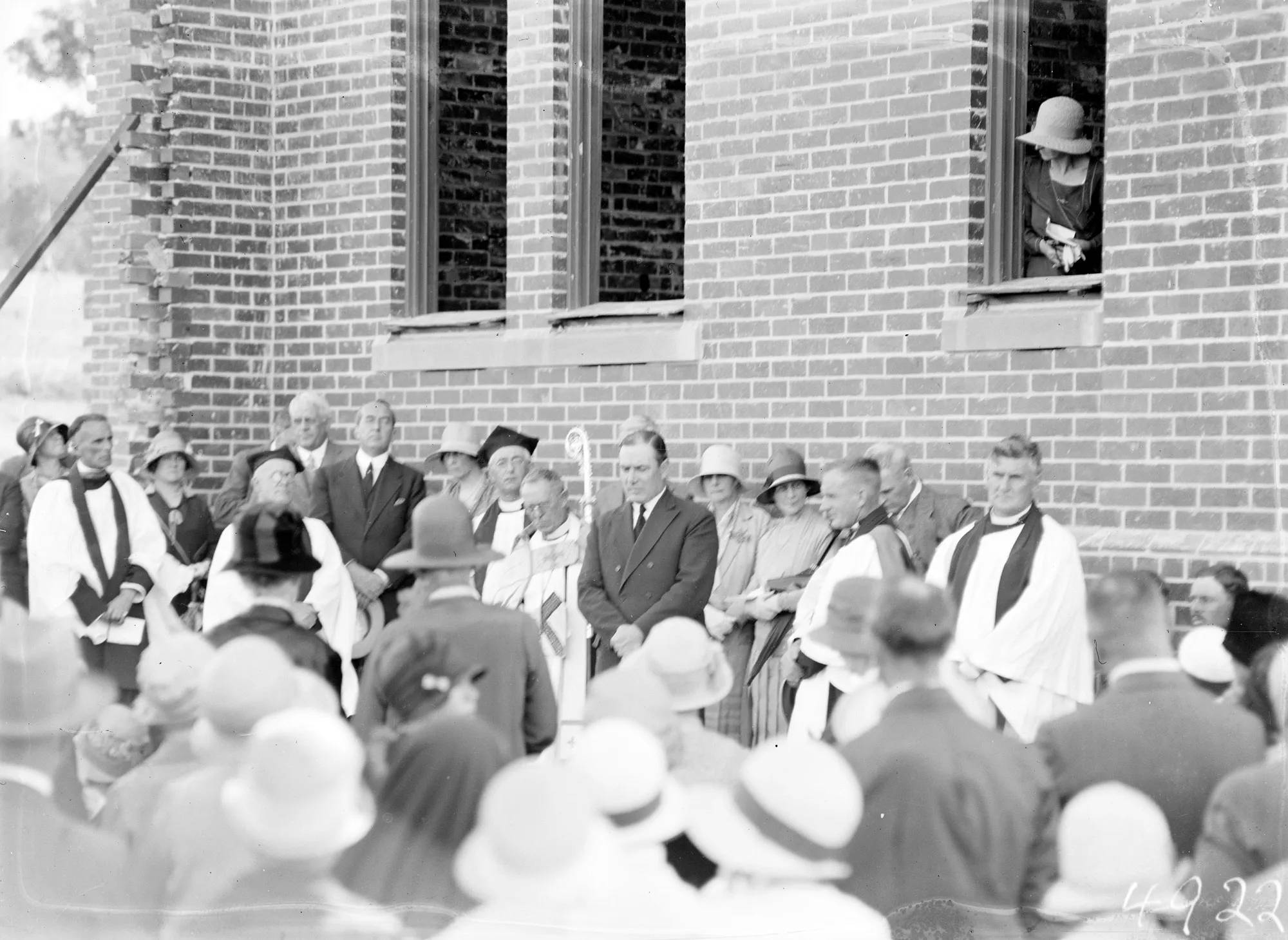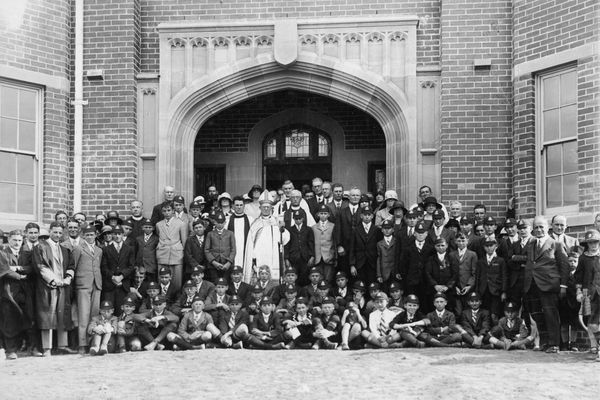Bishop Radford and Education
By Mrs Annette Carter, College Historian
It seems fitting that our school is named after Bishop Lewis Bostock Radford who was a huge advocate for education, specifically religious education, and was instrumental in establishing religious schools in the growing Australian capital of Canberra.
In the 1920s, Radford believed that “many of the church schools had sold their souls for success”. Bishop Radford, having a holistic view of religious education, believed this was something he could change, and he put his mind to establishing two separate schools in Canberra to support the influx of civil and parliamentary families.
Radford turned to the Community of the Sisters of the Church, based in Sydney, and together they planned to open St Gabriel’s School for girls. In 1926, St Gabriel’s School started in the old Ainslie rectory under a five-year lease while they waited for the erection of the permanent buildings at the new nine-acre site.
The foundation stone was laid by Bishop Radford in 1927. By August of 1927, the first section of the school had been completed with more construction work planned for the following three years.

The Sisters of the Church had built St Gabriel’s at a cost of £25,000 and mortgaged their Waverley establishment to provide the funds. Not long after opening, they found they could not carry the burden and decided to close the school and sell the building. To keep the school open, the Parents and Friends of the School leased it for three years and it consequently changed its name to The Canberra Church of England Girls' Grammar School.

Despite the difficulties of founding the girls’ school in Canberra, Radford forged on with a boys’ school to accompany it. His sights were set on the Monaro Grammar School that had been established in 1908. Radford had first visited the school not long after it opened. Discussions about the possibility of transferring it to Canberra were raised at the Anglican Synod in 1926, almost twenty years after Radford’s first visit.
It had originally been assumed that the Monaro Grammar School (sometimes also referred to as Manaro Grammar School) could simply be transferred to Canberra. However, it was discovered that the Articles of Association of the Monaro Grammar School did not permit the school to operate outside of New South Wales, which made it impossible to be transferred. In 1927, Radford persuaded them to transfer – not the school but its pupils. Despite some difficulties over the next couple of years, the Monaro Grammar School students were the first pupils at Canberra Grammar School.
On 5 December 1928, the foundation stone was laid for Canberra Grammar School by the Prime Minister, Mr Stanley Bruce. Radford was the first Chairman of the School Board.

When speaking at this event, Radford outlined the aims and ideals of the school. He said that it “was the beginning of great things and that it would live up to all anticipations. It had been started for the purpose of meeting the wants of parents who had come to Canberra to take over the education, especially secondary education of the Church of England boys. The ideals of the school were based upon 'British traditions and Christian traditions'".
Although Radford had secured a site of 15 acres, there was an urgent need to house the current pupils and it was proposed that the old rectory buildings at Reid were to be used. The school commenced operations on 5 February 1929 with around 60 students.
Bishop Radford's tireless efforts to establish religious schools in the growing capital left a lasting impact on the educational landscape. His dedication to providing holistic religious education amidst numerous challenges underscored the commitment to his vision. Radford set a precedent for integrating faith and education, and consequently influenced future generations of Canberra students.
